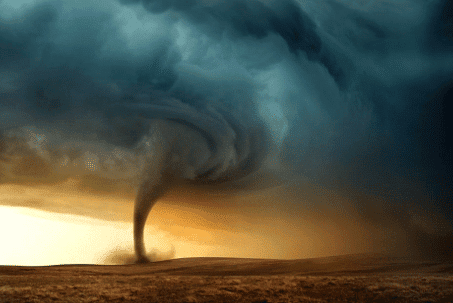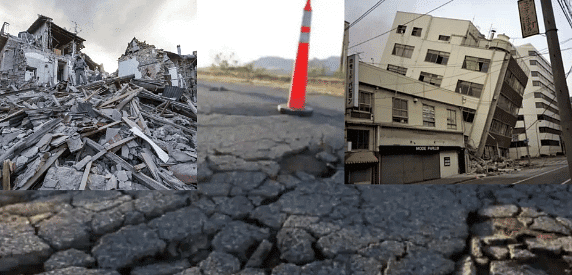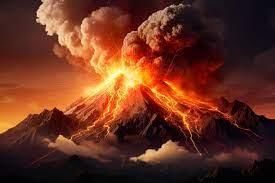Natural Disasters - 2 Class 5 Worksheet SST
Q1: Multiple Choice Questions.
(i) What causes a tsunami?
(a) Heavy rainfall
(b) Volcanic eruption or underwater earthquake
(c) Tornado
(d) Landslide
Ans: (b)
Tsunamis are usually triggered by underwater earthquakes or volcanic eruptions that displace a large volume of water, creating powerful waves.
(ii) Which natural disaster is characterized by a rotating column of air?
(a) Hurricane
(b) Earthquake
(c) Tsunami
(d) Tornado
Ans: (d)
A tornado is a rotating column of air that extends from a thunderstorm to the ground. It is known for its destructive force.
(iii) Which instrument measures the strength of an earthquake?
(a) Thermometer
(b) Barometer
(c) Richter scale
(d) Compass
Ans: (c)
The Richter scale measures the magnitude of an earthquake. It helps us understand the energy released by the earthquake.
(iv) Which natural disaster involves the sliding of soil down a slope?
(a) Tornado
(b) Hurricane
(c) Landslide
(d) Earthquake
Ans: (c)
Landslides occur when soil or rock slides down a slope due to factors like heavy rainfall, earthquakes, or human activities.
Q2: Fill in the Blanks.
(i) A _______ is a powerful ocean wave caused by underwater earthquakes or volcanic eruptions.
(ii) A sudden shaking of the ground caused by movement along faults is called an _________.
(iii) A violent rotating column of air extending from a thunderstorm to the ground is known as a ______.
(iv) The slow movement of soil down a slope, often triggered by heavy rainfall, is called ______.
(v) A sudden and violent shaking of the ground, often leading to the displacement of water and subsequent flooding, is known as a ________.
(vi) A large wave caused by underwater volcanic eruptions is known as a ________.
(vii) ________ can erupt, spewing out hot ash, lava, and gases.
(viii) The _________ measures the magnitude or strength of an earthquake.
(ix) A sudden and violent shaking of the earth's surface is called an ________.
(x) The natural disaster that can occur due to the overflow of rivers during heavy rainfall is _______.
Ans:
(i) tsunami
(ii) earthquake
(iii) tornado
(iv) landslide
(v) earthquake
(vi) tsunami
(vii) Volcanoes
(viii) Richter scale
(ix) earthquake
(x) flood
Q3: True or False.
(i) Earthquakes are caused by the movement of tectonic plates.
(ii) A hurricane is a type of geological disaster.
(iii) Volcanic eruptions can release lava, ash, and gases.
(iv) A landslide is a sudden shaking of the ground.
(v) Tsunamis are often triggered by underwater earthquakes.
Ans:
(i) True: Earthquakes occur due to the movement of tectonic plates, which are sections of the Earth's crust that move and interact.
(ii) False: A hurricane is a meteorological (weather-related) phenomenon involving powerful winds and heavy rainfall, not geological.
(iii) True: Volcanic eruptions can release lava, ash, and gases, which can pose risks to nearby communities and the environment.
(iv) False: A landslide is not a sudden shaking of the ground but rather the gradual movement of soil or rock down a slope.
(v) True: Tsunamis are often triggered by underwater earthquakes that displace water and generate powerful waves.
Q4: Give One Word.
(i) The sudden shaking of the ground caused by movement along faults is called ______________.
(ii) A powerful ocean wave caused by underwater earthquakes or volcanic eruptions is known as ______________.
(iii) The slow movement of soil down a slope, often triggered by heavy rainfall, is called ______________.
(iv) The instrument used to measure the strength of an earthquake is the ______________ scale.
(v) A rotating column of air extending from a thunderstorm to the ground is known as
Ans:
(i) Earthquake.
(ii) Tsunami.
(iii) Landslide.
(iv) Richter.
(v) Tornado.
Q5: Short Answer Questions.
(i) What causes earthquakes? Explain briefly.
Ans: Earthquakes are caused by the movement of tectonic plates. The Earth's crust is divided into large pieces called tectonic plates. When these plates move, they can grind against each other, pull apart, or collide. The stress and pressure that build up at the edges of these plates are released suddenly, resulting in the shaking of the ground known as an earthquake.
(ii) Describe the process of a volcanic eruption.
Ans: A volcanic eruption occurs when molten rock called magma rises from the Earth's mantle through cracks in the crust. As pressure builds up, the magma can erupt through a volcano's vent. When the magma reaches the surface, it's called lava. The eruption can also release ash, gases, and volcanic rocks. Eruptions can be explosive or effusive, depending on the type of magma and gases involved.
(iv) How do tsunamis form and why are they dangerous?
Ans: Tsunamis are formed when there's a sudden displacement of water, often due to underwater earthquakes or volcanic eruptions. The displaced water generates powerful waves that travel across the ocean. These waves can grow in height as they approach shallow waters near coastlines, becoming extremely dangerous and causing widespread flooding when they reach the shore.
(v) What safety measures can be taken to prepare for a tornado?
Ans: Safety measures for tornadoes include creating an emergency plan with designated safe areas like basements or storm shelters. It's important to have an emergency kit with essentials like water, food, and first aid supplies. Staying informed through weather alerts and having a communication plan is crucial. During a tornado warning, seek shelter in the designated safe areas and stay away from windows.
(vi) How can human activities contribute to landslides?
Ans: Human activities can contribute to landslides by altering the natural landscape. Deforestation, construction, mining, and improper irrigation can weaken soil stability and increase the risk of landslides. When vegetation is removed, the soil becomes more susceptible to erosion, and heavy construction machinery can destabilize slopes, triggering landslides.
|
33 videos|264 docs|50 tests
|
FAQs on Natural Disasters - 2 Class 5 Worksheet SST
| 1. What are the different types of natural disasters? |  |
| 2. How can we prepare for natural disasters? |  |
| 3. Are natural disasters increasing in frequency? |  |
| 4. How do natural disasters affect the environment? |  |
| 5. What are the economic impacts of natural disasters? |  |
















